So your dog’s breath smells a little, and you’ve decided to give in and get his teeth cleaned at the vet. The cost of the procedure can vary from one clinic to the next, depending on how much is involved. At Rock Bridge Animal Hospital we aim to be thorough, because if you’re going to anesthetize your pet for a dental procedure we want to make sure we take care of everything your pet needs while they’re asleep. You don’t want to be back in a couple months with another issue in the mouth!
For this reason we do full mouth dental radiographs on all pets that undergo a dental cleaning. Why can’t we just tell if a tooth is good or bad by looking at it? We’ll show you.
This is the mouth of a sweet little dog named Nollie, who came to us for a dental procedure. This is her “before” picture. You can see there is a small amount of tartar, and some mild gingivitis (bright red gums) toward the back of the mouth.
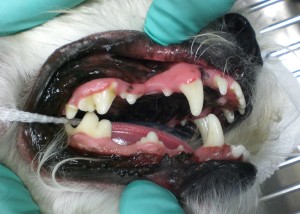 |
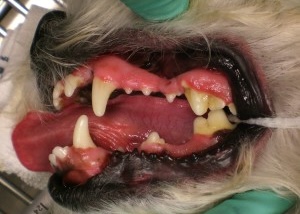 |
Dental probing revealed no pockets around any of the teeth. A mouth that looks like this typically wouldn’t require extractions.
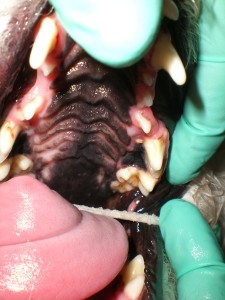
Here is a radiograph of her upper 4th premolar, with arrows highlighting the large tooth root abscess we found:
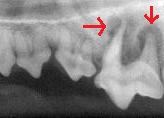
The Culprit
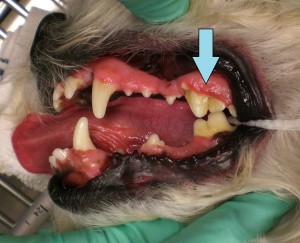
And a comparison of the same (healthy) tooth on the other side:
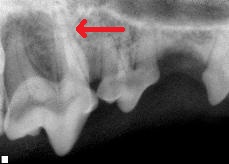
Nollie’s tooth root abscess had ruptured through the skin just under her eye, which was the reason the owner brought her to us. However, that tooth root infection started long before it popped through the skin. They can be painful, and pets are exceptionally good at hiding signs of dental pain. Nollie’s owner had no reason to think anything was wrong until she saw the swelling under the eye. If a mouth that looks this great can have a tooth root infection, you can imagine what we might find in a much dirtier mouth! So any time we do a dental, we take those x-rays of all the teeth, because we don’t want to miss these.
